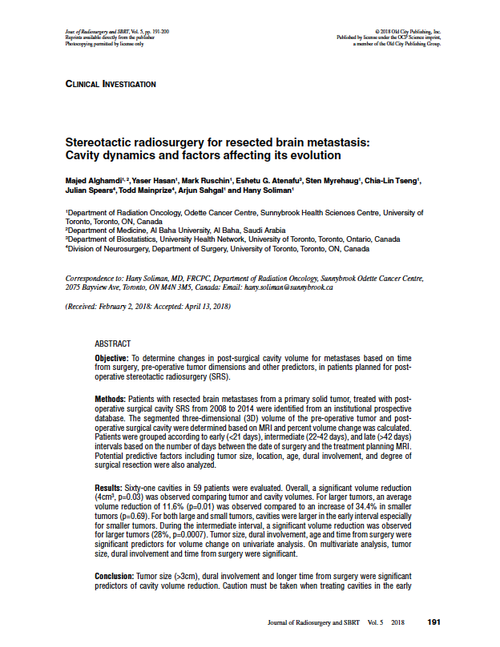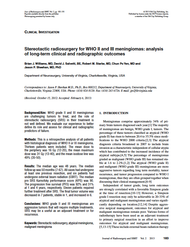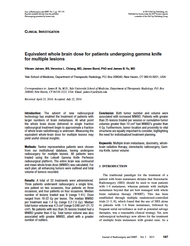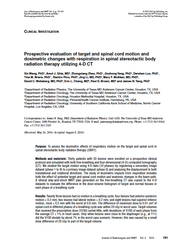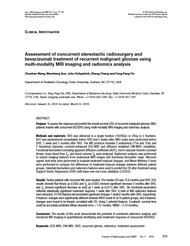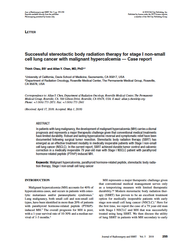- Home
- Journal Contents Downloads
- JRSBRT Downloads
- JRSBRT 5.3, p. 191-200
Product Description
Stereotactic radiosurgery for resected brain metastasis: Cavity dynamics and factors affecting its evolution
Majed Alghamdi, Yaser Hasan, Mark Ruschin, Eshetu G. Atenafu, Sten Myrehaug, Chia-Lin Tseng, Julian Spears, Todd Mainprize, Arjun Sahgal and Hany Soliman
Objective: To determine changes in post-surgical cavity volume for metastases based on time from surgery, pre-operative tumor dimensions and other predictors, in patients planned for postoperative stereotactic radiosurgery (SRS).
Methods: Patients with resected brain metastases from a primary solid tumor, treated with postoperative surgical cavity SRS from 2008 to 2014 were identified from an institutional prospective database. The segmented three-dimensional (3D) volume of the pre-operative tumor and postoperative surgical cavity were determined based on MRI and percent volume change was calculated. Patients were grouped according to early (<21 days), intermediate (22-42 days), and late (>42 days) intervals based on the number of days between the date of surgery and the treatment planning MRI. Potential predictive factors including tumor size, location, age, dural involvement, and degree of surgical resection were also analyzed.
Results: Sixty-one cavities in 59 patients were evaluated. Overall, a significant volume reduction (4cm3, p=0.03) was observed comparing tumor and cavity volumes. For larger tumors, an average volume reduction of 11.6% (p=0.01) was observed compared to an increase of 34.4% in smaller tumors (p=0.69). For both large and small tumors, cavities were larger in the early interval especially for smaller tumors. During the intermediate interval, a significant volume reduction was observed for larger tumors (28%, p=0.0007). Tumor size, dural involvement, age and time from surgery were significant predictors for volume change on univariate analysis. On multivariate analysis, tumor size, dural involvement and time from surgery were significant.
Conclusion: Tumor size (>3cm), dural involvement and longer time from surgery were significant predictors of cavity volume reduction. Caution must be taken when treating cavities in the early (<21 days) interval after surgery as it may lead to irradiating more normal tissue especially in small tumors.
Keywords: stereotactic radiosurgery, fractionated stereotactic radiosurgery, brain metastasis, cavity dynamics
After payment has been processed for your order of a digital copy (PDF) of this article, you will see a download link on your completed order page and also receive an email containing a download link. The links, which will enable you to download one copy of the article, will expire after 24 hours.
 Loading... Please wait...
Loading... Please wait...

